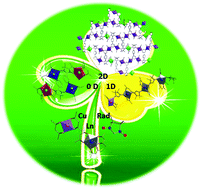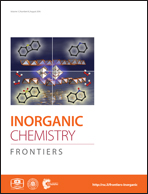2p–3d–4f hetero-tri-spin molecule-based magnetic compounds
Abstract
The promising magnetic behavior of heterospin systems has spurred the research of 2p–3d–4f hetero-tri-spin compounds. Such a magnetic system has crucial advantages: the strongest possible magnetic interactions resulting from the direct binding of the radicals to the metal ions, access to strong magnetic anisotropies arising from 4f ions, and novel magnetic behavior derived from the synergic or competitive magnetic interactions between three different spin carriers. Herein we review recent advances made toward a rational development of 2p–3d–4f complexes. Special attention is given to the 2p–3d–4f compounds exhibiting slow magnetic relaxation.
Licun Li obtained his Ph.D. from Nankai University (2002). Now he is a Professor of Chemistry at Nankai University and his current research interests are in the field of molecular magnetism, especially metal–radical compounds. Dr Jean-Pascal Sutter received his Ph.D. from Strasbourg University in 1992. He joined the French National Center for Scientific Research (CNRS) and currently is a research director at the Coordination Chemistry Lab (LCC) in Toulouse (France). Both have worked together in 1995 in the group of Prof. Olivier Kahn at the Institut de Chimie de la Matière Condensée de Bordeaux (ICMCB). Since 2010 they have actively collaborated on the topic covered by the present review.

- This article is part of the themed collections: 2016 Inorganic Chemistry Frontiers Review-type Articles and Sino-European Collaborators

 Please wait while we load your content...
Please wait while we load your content...